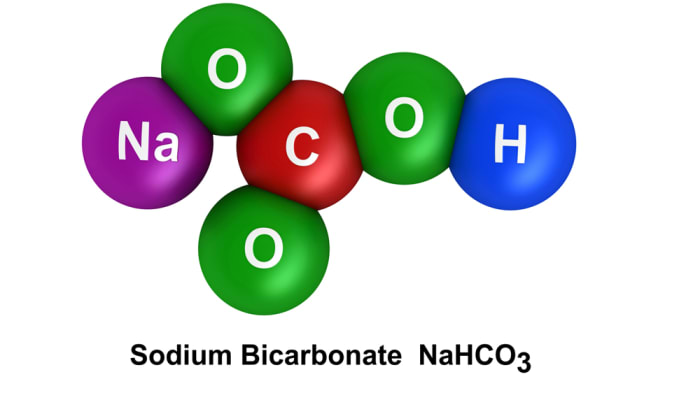What is sodium bicarbonate?
More about baking soda

Sodium bicarbonate can be found in almost every kitchen, as this white powder known as baking soda is used in practically all spheres of life; in cosmetics, in cooking and in household chores.
Let’s find out more about baking soda
Sodium bicarbonate has the formula NaHCO₃, and it has the following properties:
- it looks like a white powder, and easily dissolves in warm water;
- baking soda is safe to use. It does not burn, and cannot be used as an explosive;
- it is salty and bitter to the taste, and somewhat irritating to the tongue and mucous membranes;
- neutralizes acids, so soda is used in first aid to treat external burns.

How baking soda is produced
In industrial production, NaHCO₃ is obtained by a special method which is called ammoniac-chloride: in a highly concentrated solution of sodium chloride enriched with ammonia, carbon dioxide is released, and so baking soda is obtained.
The equation of the reaction can be written as follows:
NH₃ + CO₂ + H₂O → NH₄HCO₃;
NH₄HCO₃ + NaCl → NaHCO₃↓ + NH₄Cl.
As soda dissolves poorly in cold water, it is easily separated by filtration. Incidentally, from the ammonium chloride obtained as a result of the reaction, ammonia can be chemically produced once more.
Sodium bicarbonate is used in many spheres, for example:
- medicine, in treating acid burns, rinsing the throat, mouth and nasal pharynx;
- in the food industry (official name of the food additive NaHCO₃ – E500);
- in making pastries and bread;
- in the beauty industry: soda is used for washing hair and whitening teeth;
- this white powder can always be used in fire-fighting.

Interesting fact: if you heat sodium bicarbonate to a temperature of 60 °C, the substance breaks down into sodium carbonate Na₂CO₃, water and carbon dioxide.
Reaction of soda with acids
Baking soda reacts with acids in a special way: first carbonic acid forms (which then breaks down into H₂О and CO₂) and salt.
Reaction equation:
NaHCO₃ + HCl → NaCl + H₂CO₃
H₂CO₃ → H₂O + CO₂↑
You can keep see this reaction using ordinary vinegar., If you add acetic acid to a teaspoon of baking soda, it will immediately start to hiss: bubbles will form and break on the surface of the salt. This method is used by cooks to make dough fluffier.
The reaction of sodium bicarbonate and vinegar:
NaHCO₃ + CH₃COOH → CH₃COONa + H₂O + CO₂↑
As a result of the interaction of vinegar and sodium bicarbonate, a substance is forms called sodium acetate, CH₃COONa, which is widely used in industrial production.

A simple experiment with soda: lots of foam
Kids will love this experiment, as it looks spectacular.
Warning! Vinegar is an acid which damages the respiratory tracts and may leave burns on the skin (especially if it is highly concentrated). Be careful.
To make the foam you will need:
- water;
- liquid soap or dish-washing liquid;
- sodium bicarbonate (baking soda);
- gloves;
- stirring rod;
- bottle (you can use a 500 ml container for the experiment);
- acetic acid;
- tray.
In a separate container mix the dishwashing liquid and water, as in vinegar the soap effect will not work, and add four teaspoons of soda. Mix well and pour the solution into the bottle.
Place the bottle on the tray to keep the table clean, and quickly add 100 ml of vinegar, and so you will see an impressive effect, the formation of a large amount of foam. This experiment is explained by the fact that carbon dioxide is actively formed from vinegar and soda, which “mixes” the water and soap to a foam. Click here for more experiments with baking soda.
Another experiment: blow up a balloon using soda

You will need:
- soda;
- vinegar;
- bottle;
- balloon.
This method is very suitable if you need to blow up a lot of balloons for a party (if you do not have a special device).
Simply add soda, and then vinegar (a lot of carbon dioxide should be released, so use around one third of a bottle of vinegar and several tablespoons of soda). Put the balloon over the neck of the bottle, and you will see the balloon inflate quickly, from the gas that forms as a result of the reaction. These balloons won’t float.